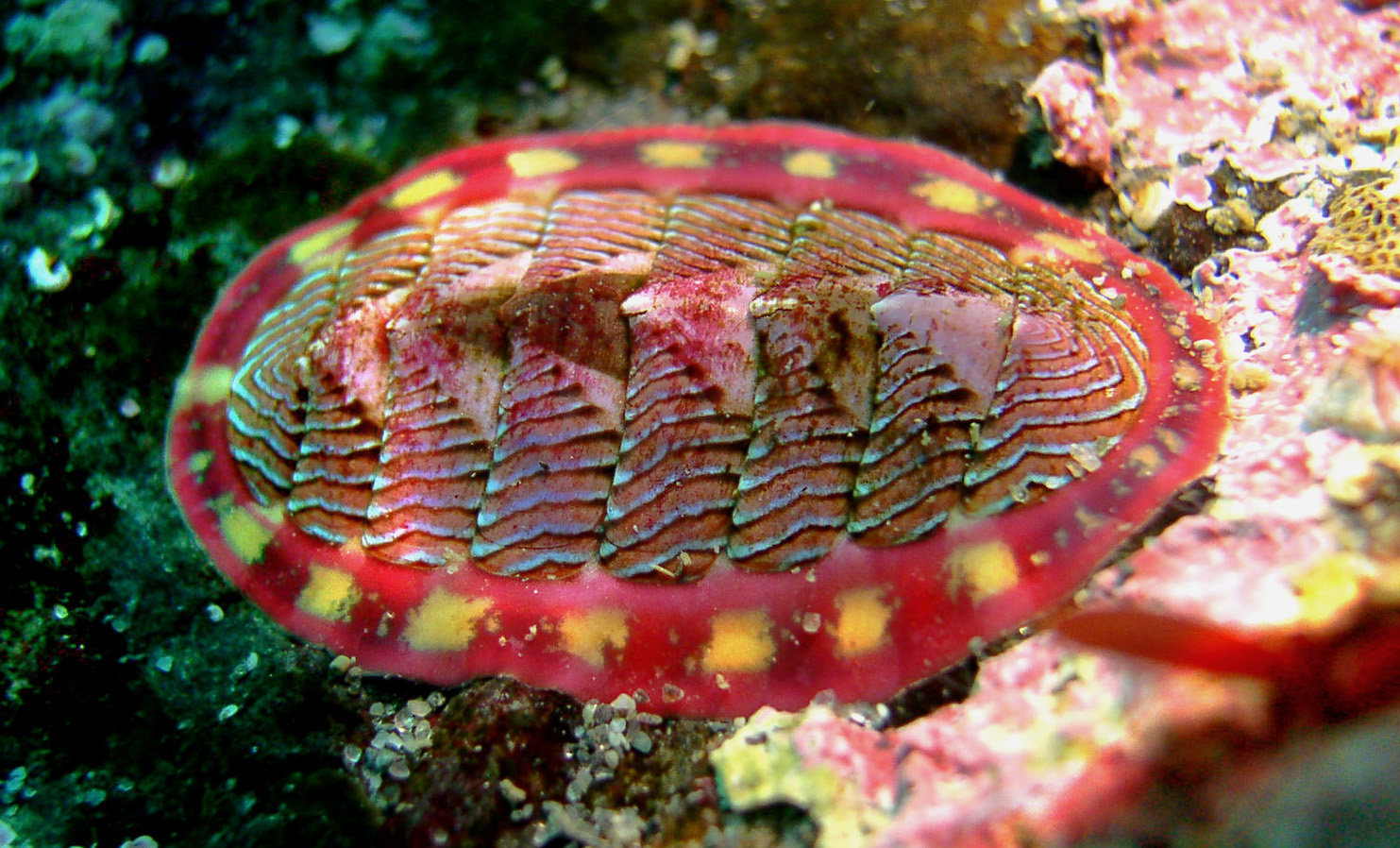- Tonicella lineata
regnum =Animal ia
phylum =Mollusc a
classis =Polyplacophora
ordo =Neoloricata
familia =Lepidochitonidae
genus = "Tonicella "
species = "T. lineata"
binomial = "Tonicella lineata"
binomial_authority = Wood, 1815
synonyms = "Tonicella blaneyi" Dall, 1905"Tonicella lineata", commonly known as the lined chiton, is a species of
chiton .ize and description
"T. lineata" is a very colorful chiton, having blue, purple or black straight or zig-zag lines on each of the eight valves. The background color of the valves is often brown or red, but can also be bright blue or yellow to orange. The girdle is hairless and brown to red or pink, often with regular yellow or white patches. This species grows to 5 cm in length.
imilar species
"
Tonicella lokii " is extremely similar but has radiating bands on the girdle. "Tonicella undocaerulea " is very similar but lacks a dark border to the concentric blue lines on the anterior plate. "Mopalia spectabilis " looks superficially similar due to its bright blue wavy lines on the valves, but has a hairy girdle.Baldwin, A. (2007). Illustrated Keys to the chitons (Polyplacophora). Accessed from: http://www.wallawalla.edu/academics/departments/biology/rosario/inverts/Mollusca/Polyplacophora/Baldwin_Polyplacophora_Key_Sept_2007.pdf] It can also be confused with "Tonicella insignis " (Reeve, 1847) which retains the zig-zag pattern in concentric rings on the first and eighth valves and also the lines are most often white. [Lamb, Andy & Handy, Bernard P. Marine Life of the Pacific Northwest Harbour Publishing 2005]Distribution and habitat
The natural range of "T. lineata" stretches from the
Aluetian Islands ofAlaska toSan Miguel Island ofCalifornia , as well as theSea of Okhotsk ofRussia and northernJapan . This species has also been found inPuget Sound , Washington on floats [Kozloff, Eugene N. Seashore Life of the Northern Pacific Coast University of Washington Press, Seattle and London 1973] . It has been recorded fromintertidal and subtidal waters to a depth of 30 m to 90 m (100 - 300 feet). [ name=morris80>Morris, Robert H., Donald P. Abbot, and Eugene C. Haderlie (1980). "Intertidal Invertebrates of California". Stanford University Press, Stanford, CA. 690 pp.] [Lamb, Andy & Handy, Bernard P. Marine Life of the Pacific Northwest Harbour Publishing 2005]Biology
"T. lineata" often occurs on rocks that are encrusted by coralline
algae ; presumably this is what their coloration is intended to camouflage against. If knocked from its substrate, "T. lineata" will contract into a ball in order to protect it's vulnerable ventral side, similar to manyisopods . Coralline algae are also the major food item of "T. lineata". On theOregon coast this species can be found living under purple urchins ("Strongylocentrotus purpuratus "). This species is predated on by the sea stars "Pisaster ochraceus " and "Leptasterias haxactis ".Kozloff, Eugene (1993). "Seashore Life of the Northern Pacific Coast". University of Washington Press, Seattle, WA. 370 pp.] Animals out of water only have about 73% the respiration of submerged animals, and likely incur an oxygen debt while out of water that must be repaid once resubmerged.Morris, Robert H., Donald P. Abbot, and Eugene C. Haderlie (1980). "Intertidal Invertebrates of California". Stanford University Press, Stanford, CA. 690 pp.] When submerged, gas exchange occurs by water flowing from the anterior portion of the chiton into the mantle cavity where thectenidia (gills) reside in the pallial grooves. This also takes care of waste produced as the water passes over the anus after the ctenidia and carries away feces [Brusca, Richard C. & Brusca, Gary J. Invertebrates Sinauer Associates, Inc., Publishers Sunderland, Massachusetts 2003]References
External links
* [http://www.wallawalla.edu/academics/departments/biology/rosario/inverts/Mollusca/Polyplacophora/Tonicella_lineata.html Walla Walla University Marine Invertebrate Key]
Wikimedia Foundation. 2010.

